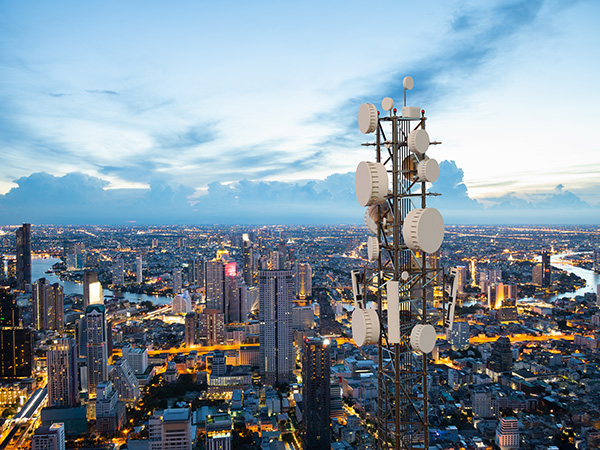At last week’s Huawei Connect 2025 event in Shanghai, Yang Chaobin, Huawei's Director of the Board and CEO of the ICT Business Group, officially launched Huawei's new open-access SuperPoD architecture, as well as a new line of SuperPoD-based products, which Yang said will enable the company to collaborate with partners to create a solid computing backbone for all scenarios.
Following a keynote from Huawei’s Deputy Chairman of the Board and Rotating Chairman Eric Xu on how SuperPoD creates a new interconnect paradigm for AI infrastructure, Yang took the stage to go into more detail on the SuperPoD architecture based on Huawei’s UnifiedBus interconnect protocol, which deeply interconnects physical servers so that they can learn, think, and reason like a single logical server.
“This has created a new paradigm for large-scale compute that is more efficient, reliable, and scalable,” Yang said.
Yang explained that this new approach is necessary because the swift rise of AI has boosted demand for more effective compute and lower latency. Traditionally, this has been done by stacking servers in a computing cluster – the problem is that it doesn’t scale well, because compute utilization becomes lower on a cluster as you add more servers to it. Larger clusters also suffer from more frequent interruptions during model training.
Yang said the SuperPoD architecture is more efficient, reliable, and scalable, and delivers a number of new features, including strong resource pooling, scaling, and long-term stability. It also enables high-bandwidth and low-latency interconnection between computing and data storage units, while its unified protocols and memory addressing allow effective compute to scale linearly with the cluster scale, which ultimately improves cluster reliability.
“Using SuperPoD, we will be able to advance innovation under our Ascend umbrella, and develop a full lineup of SuperPoD products,” Yang said.
In fact, he added, Huawei has already shipped over 300 Atlas 900 A3 SuperPoD units in 2025 for more than 20 customers from multiple sectors, including the Internet, finance, carrier, electricity, and manufacturing.
New SuperPoD products
Yang also talked about the new products being launched at Huawei Connect 2025 based on UnifiedBus and the SuperPoD architecture.
For example, the liquid-cooled Atlas 950 SuperPoD – billed as an optimal solution for ultra-large-scale AI computing tasks – uses an orthogonal architecture to achieve cableless electrical interconnection. It can be scaled up in steps of 64 NPUs, and supports up to 8,192 NPUs interconnected without convergence.
Then there’s the Atlas 850 SuperPoD designed for enterprises. Yang said the Atlas 850 is powered by eight Ascend NPUs and meets most enterprises' model post-training and multi-scenario inference needs. The Atlas 850 supports flexible multi-cabinet deployment, so enterprises can build SuperPoD clusters comprised of up to 128 units with 1,024 NPUs. Yang said it’s also the only SuperPoD-based compute cluster that can be deployed in an air-cooled equipment room.
Also launched at the event was the Atlas 350 card, powered by Huawei’s latest Ascend 950PR chip, which delivers double the vector compute and finer-grained cache-line memory access than previous models. Customers can interconnect up to four Atlas 350 cards alone through UnifiedBus ports to pool compute and memory resources, which allows the cards to flexibly support both large-parameter-quantity models and lower-latency applications.
Finally, Huawei launched the TaiShan 950 SuperPoD, which Yang said is the industry's first SuperPoD product for general-purpose computing. It delivers hundred-nanosecond-level ultra-low latency and terabit-level ultra-high bandwidth, and also supports memory pooling all of which significantly improves general-purpose computing performance for databases, live virtual machine migration, and big data operations.
“These products will provide compute for large data centres, enterprise data centres, and small-size workstations,” Yang said. “So, SuperPoD technology will benefit every industry.”
Open hardware and software
Yang added that Huawei will be relying on collaboration with its partners to help realise the full potential of SuperPoD architecture, which is why it’s opening its SuperPoD hardware and software to them.
On the hardware side, Huawei plans to provide open access to its UnifiedBus protocol and SuperPoD reference architecture, as well as its SuperPoD hardware, including its NPU modules, air-cooled and liquid-cooled blade servers, AI cards, CPU boards, and cascade cards. This will enable Huawei's customers and partners to develop their own UnifiedBus-based products using SuperPoD hardware.
Meanwhile, because SuperPoD operations rely heavily on operating system support, Huawei has also made the entire UB OS Component open-source so its code can be integrated into upstream open-source OS communities such as openEuler.
Users can integrate part or all of the UB OS Component's source code into their existing OSs, to support independent iteration and version maintenance. Users can also embed the entire component into their existing OSs as a plug-in to ensure it can evolve in-step with open-source communities.
“We are committed to our open-hardware and open-source-software approach that will help more partners develop their own industry-scenario-based SuperPoD solutions,” Yangh said. “This will accelerate developer innovation and foster a thriving ecosystem."




































